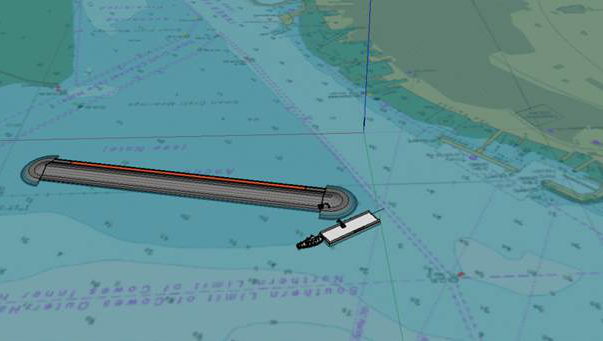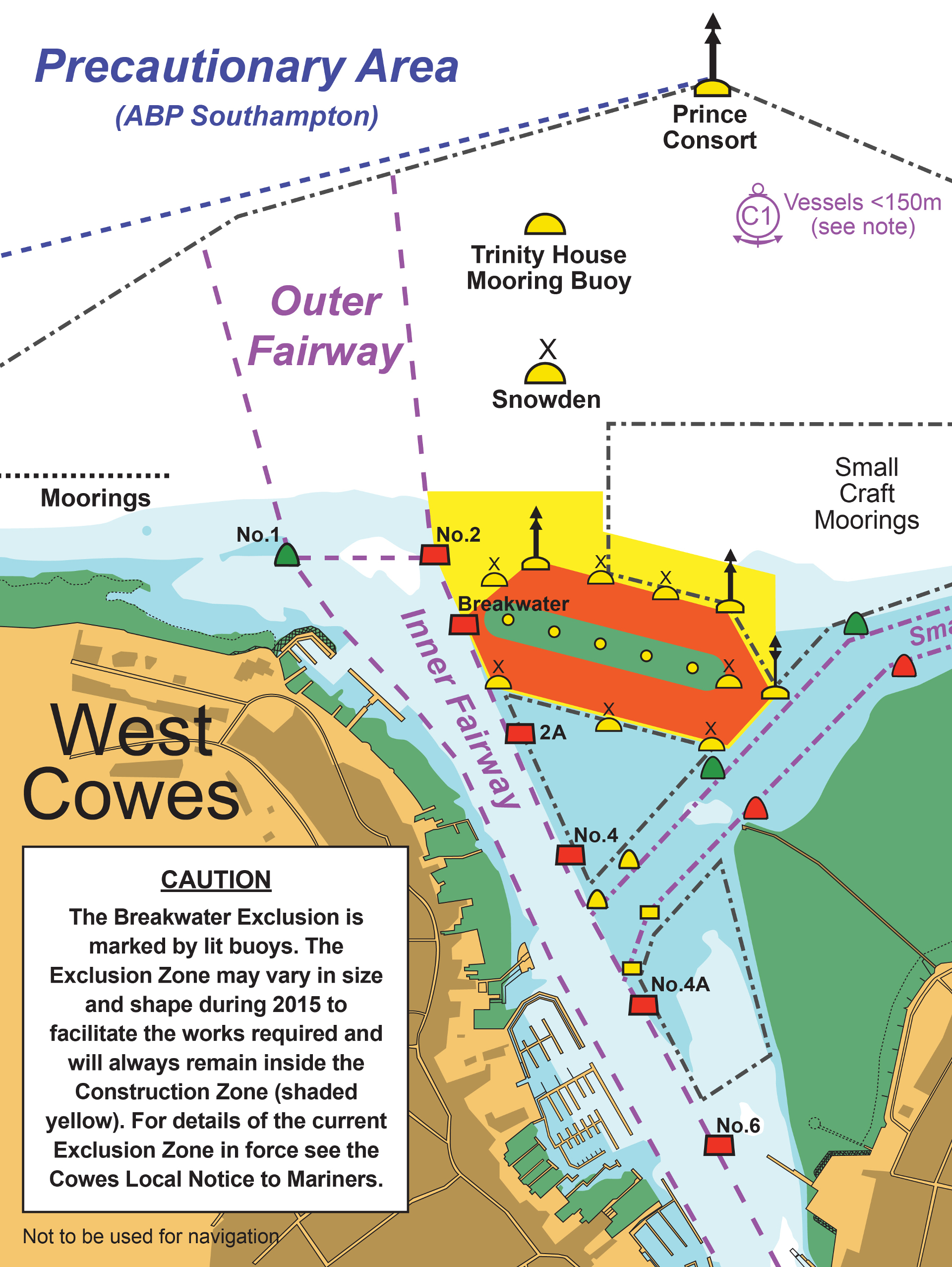This in from Cowes Harbour Commission. Ed
Following a successful winter settlement period of the Breakwater’s gravel core, Cowes Harbour Commission (CHC) is pleased to report that contractors Boskalis Westminster will soon return as scheduled to carry out the final re-shaping and placement of rock armour layers.
Boskalis Westminster’s Head of Capital and Coastal Projects Paul Datson, said:
“We are conducting regular surveys and cone penetration tests on the Breakwater and after detailed evaluation of the settlement process we are confident that gravel settlement and bearing capacity of the seabed meets our design predictions. We can therefore proceed as planned with the 2015 construction programme and final phase of this 18-month project.”
Transforming Cowes into a true sheltered harbour
Captain Stuart McIntosh, Cowes Harbour Master, said:
“2015 is going to be an exciting year on the development front for Cowes Harbour. Completion on the new Cowes Breakwater will realise the Commission’s long-term goal of transforming Cowes into a true sheltered harbour, protecting jobs and businesses and creating a catalyst for further investment, as is already being seen with the proposed new marina and Solent Gateways development projects in East Cowes.”
Cowes Breakwater 2015 construction programme
Boskalis Westminster will mobilise in June to commence the reshaping of the Breakwater’s gravel core, bringing sections into profile before applying layers of smaller rock of up to 60kg that act as a filter to prevent the gravel migrating out of the core structure. Following this, a rock armour layer consisting of 300-1000kg rocks will be installed to provide long-term weather and wave protection. A total of around 45,000 tonnes of rock will be brought from Cherbourg in France and transported by barge to Cowes.
The rock barge will be offloaded by excavators and shovels on the western end and northern side of the Breakwater where there is sufficient water depth to accept the barges. Excavators located on the Breakwater will position the rocks working anti-clockwise, starting on the southern face working to the east and then back along the northern face to the west, bringing the Breakwater to its final profile and finished appearance.
Finally, permanent navigation aids, fixed beacons and buoys will be put in place before a monitoring and handover period in autumn 2015. The 50-year design life height of the Breakwater is 5.5 metres above chart datum, but at the moment of handover the height will be approximately 5.9 metres to allow for long-term settlement.
Cowes Breakwater Exclusion Zone
An Exclusion Zone marked by lit buoys continues to be in place in order to ensure the safety of navigation during the Breakwater construction and this Exclusion Zone may vary in shape and size during 2015 to accommodate the construction works. See Cowes Local Notices to Mariners for the latest information.
Capt. McIntosh added:
“We are mindful of keeping the Exclusion Zone as small as practicable and CHC will work to ensure that any impacts are kept as low as possible during construction. The close cooperation that we continue to receive from yacht clubs, event organisers and other stakeholders in Cowes is greatly appreciated.”
Image: © Cowes Harbour Commission / Boskalis Westminster






